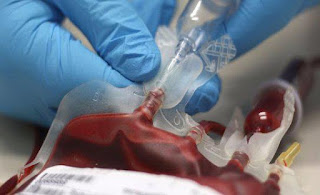Understanding Heparin Calcium: A Key Anticoagulant in Medicine
In the world of medicine, preventing and managing blood clot formation is of utmost importance to safeguard patients from life-threatening conditions. Heparin calcium, a vital anticoagulant, plays a significant role in achieving this goal. In this blog, we will delve into the essential aspects of heparin calcium, its mechanisms of action, and its widespread use as a crucial therapeutic agent in modern healthcare.
What is Heparin Calcium?
Heparin calcium is a naturally occurring anticoagulant derived from animal tissues, particularly the lungs and liver of pigs and cows. It is a member of the heparin family, a group of highly sulfated glycosaminoglycans known for their potent anticoagulant properties. Heparin calcium is primarily used in medicine to prevent and treat blood clotting disorders.
How Does Heparin Calcium Work?
Heparin calcium's anticoagulant effect arises from its ability to enhance the activity of antithrombin, a natural protein in the blood that inhibits clotting factors. By binding to antithrombin, heparin calcium accelerates its inhibition of thrombin and other coagulation factors, effectively preventing the formation of blood clots. This mechanism helps reduce the risk of dangerous conditions like deep vein thrombosis (DVT), pulmonary embolism, and stroke.
Clinical Applications of Heparin Calcium
Heparin calcium finds extensive use in various medical settings. It is commonly administered in hospitals during surgery to prevent clotting and reduce the risk of postoperative complications. In critical care, heparin calcium is employed to prevent clot formation in patients immobilized for extended periods. Moreover, it is an essential component in hemodialysis to maintain blood flow in dialysis circuits.
Monitoring and Dosing
Heparin calcium's potency and effects can vary among individuals, necessitating careful monitoring of its anticoagulant activity. Healthcare professionals perform blood tests, such as activated partial thromboplastin time (aPTT) or anti-Xa assays, to measure heparin calcium's effectiveness and ensure appropriate dosing. This tailored approach helps strike the delicate balance between preventing blood clots and avoiding bleeding complications.
Combination with Other Therapies
In some cases, heparin calcium may be used in combination with other anticoagulants, such as warfarin or direct oral anticoagulants (DOACs). This combination therapy is carefully managed and is often employed in conditions requiring a swift onset of anticoagulation, such as certain cardiac or thrombotic emergencies.
In conclusion, heparin calcium is a fundamental anticoagulant in modern medicine, contributing significantly to the prevention and management of blood clotting disorders. Its ability to enhance antithrombin activity and inhibit clotting factors makes it a crucial therapeutic agent in various medical scenarios, from surgery and critical care to dialysis and clot prevention. However, proper monitoring and dosing are essential to ensure optimal effectiveness and safety. As our understanding of heparin calcium continues to evolve, this essential anticoagulant will undoubtedly remain a cornerstone in the field of medical care, safeguarding countless patients from the risks of life-threatening blood clots.




Comments
Post a Comment